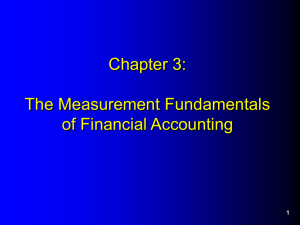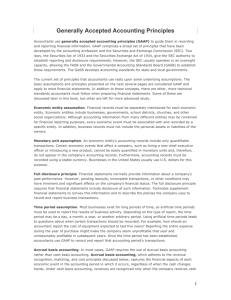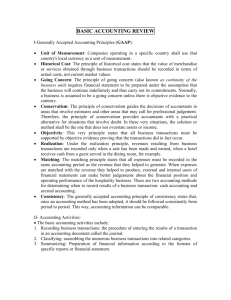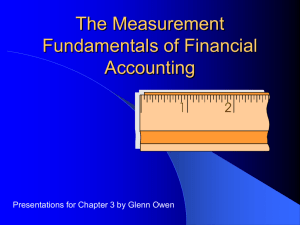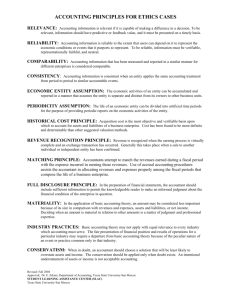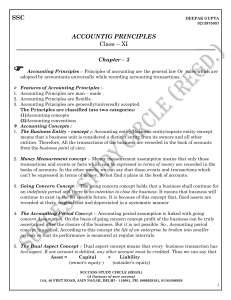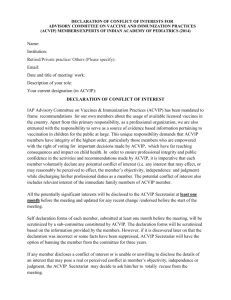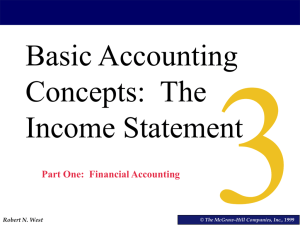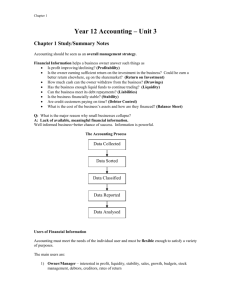Generally Accepted Accounting Principles
advertisement
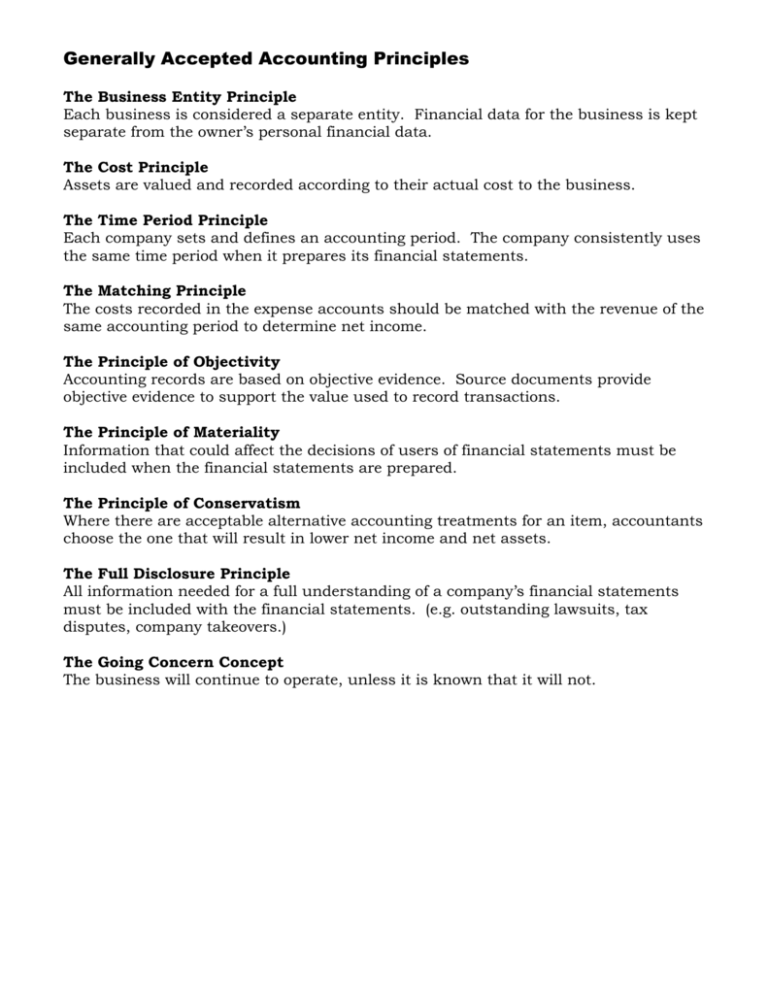
Generally Accepted Accounting Principles The Business Entity Principle Each business is considered a separate entity. Financial data for the business is kept separate from the owner’s personal financial data. The Cost Principle Assets are valued and recorded according to their actual cost to the business. The Time Period Principle Each company sets and defines an accounting period. The company consistently uses the same time period when it prepares its financial statements. The Matching Principle The costs recorded in the expense accounts should be matched with the revenue of the same accounting period to determine net income. The Principle of Objectivity Accounting records are based on objective evidence. Source documents provide objective evidence to support the value used to record transactions. The Principle of Materiality Information that could affect the decisions of users of financial statements must be included when the financial statements are prepared. The Principle of Conservatism Where there are acceptable alternative accounting treatments for an item, accountants choose the one that will result in lower net income and net assets. The Full Disclosure Principle All information needed for a full understanding of a company’s financial statements must be included with the financial statements. (e.g. outstanding lawsuits, tax disputes, company takeovers.) The Going Concern Concept The business will continue to operate, unless it is known that it will not. Generally Accepted Accounting Principles Match the definition to the correct GAAP. A B C D E AB AC AD AE The The The The The The The The The Matching Principle Business Entity Principle Time Period Principle Principle of Objectivity Going Concern Concept Principle of Materiality Principle of Conservatism Cost Principle Full Disclosure Principle B Each business is considered a separate entity. Financial data for the business is kept separate from the owner’s personal financial data. AD Assets are valued and recorded according to their actual cost to the business. C Each company sets and defines an accounting period. The company consistently uses the same time period when it prepares its financial statements. A The costs recorded in the expense accounts should be matched with the revenue of the same accounting period to determine net income. D Accounting records are based on objective evidence. Source documents provide objective evidence to support the value used to record transactions. AB Information that could affect the decisions of users of financial statements must be included when the financial statements are prepared. AC Where there are acceptable alternative accounting treatments for an item, accountants choose the one that will result in lower net income and net assets. AE All information needed for a full understanding of a company’s financial statements must be included with the financial statements. (e.g. outstanding lawsuits, tax disputes, company takeovers.) E The business will continue to operate, unless it is known that it will not. BAF3M1 Name: _______________________________ Generally Accepted Accounting Principles Match the definition to the correct GAAP. A B C D E AB AC AD AE The The The The The The The The The Matching Principle Business Entity Principle Time Period Principle Principle of Objectivity Going Concern Concept Principle of Materiality Principle of Conservatism Cost Principle Full Disclosure Principle Each business is considered a separate entity. Financial data for the _________ business is kept separate from the owner’s personal financial data. Assets are valued and recorded according to their actual cost to the _________ business. Each company sets and defines an accounting period. The company _________ consistently uses the same time period when it prepares its financial statements. The costs recorded in the expense accounts should be matched with the _________ revenue of the same accounting period to determine net income. Accounting records are based on objective evidence. Source documents _________ provide objective evidence to support the value used to record transactions. Information that could affect the decisions of users of financial statements _________ must be included when the financial statements are prepared. Where there are acceptable alternative accounting treatments for an item, _________ accountants choose the one that will result in lower net income and net assets. All information needed for a full understanding of a company’s financial _________ statements must be included with the financial statements. (e.g. outstanding lawsuits, tax disputes, company takeovers.) _________ The business will continue to operate, unless it is known that it will not.
